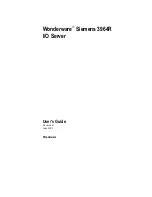
2-7
Hardware Setup
Memory
The mainboard supports up to four 240-pin 533/667MHz
unbuffered
ECC DDR-II
DIMMs to provide the maximum of 4GB memory capacity.
Since DDR2 modules are not interchangeable with DDR and the DDR2 standard is not
backwards compatible, you should always install DDR2 memory module in the DDR2
slot (DIMM1~DIMM4). Otherwise, you will not be able to boot up your system and your
mainboard might be damaged.
For more information on compatible components, please visit
http://www.msi.com.
tw/program/products/server/svr/pro_svr_qvl.php
.
DIMM1~DIMM4
(from left to right)
Channel A (DIMM1, DIMM2)
Channel B (DIMM3, DIMM4)
Introduction to DDR2 SDRAM
DDR2 is a new technology of memory module, and its speed is the top limit of current
DDR technology. DDR2 uses a 1.8V supply for core and I/O voltage, compared to 2.
5V for DDR, and requires 28% less power than DDR chips. DDR2 truly is the future of
memory, but will require some changes as the technology is not backwardly compat-
ible and only motherboards specifically designed for DDR2 memory will be able to
support these chips.
DDR2 incorporates new features at the chip level that give it better signal integrity,
thereby enabling higher clock speeds.
DDR2 modules have 240 pins, versus 184 pins on a DDR module, and the length of
DDR2 module is 5.25
”
. DDR2 modules have smaller and tighter spaced pins. The
height of DDR2 modules varies, but they will typically be less than 1.3
”
in height.
Memory Module Population Rules
Install at least one DIMM module on the slots. Each DIMM slot supports up to a maximum
size of 1GB. Users can install either single- or double-sided modules to meet their
own needs. Please note that
each DIM M can work respectively for single-
channel DDR2, while both channels populated with the same amount of
memory size will work as dual-channel DDR2
.
















































